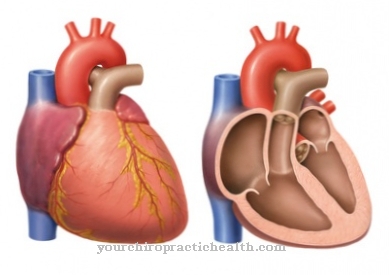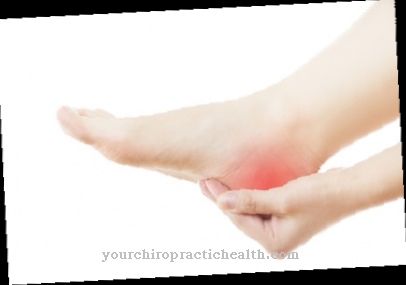Boxing is a tough sport, which is not only felt by the opponents in the ring, but the spectators often see it too. Some right leaves clear traces on the face of the opponent, which there for days as bruises are visible. We all know such skin discolorations. They occur easily if you bump into the edge of the table, slip on black ice or sprain your ankle.
License plates & signs

Similar shades of color also occur if the puncture site is not pressed firmly or long enough after an injection or blood sample so that the blood can seep into the tissue. As different as the cause is, the consequences are the same in all cases. The bruise, called a hematoma by medical professionals, is due to bleeding in or just under the skin. Likewise, the bleeding can also take place in the tissue under the skin layers.
If, during boxing, it is a blow that bursts a vein and thereby causes the accumulation of blood in the tissue, in the other case a vessel is torn through the blood leakage from the puncture channel of the injection site. The color intensity of the bruise depends on various factors. For example, it is strongly influenced by the color of the person's skin. It is therefore evident that skin bleeding in dark-skinned people appears less contrasting than in those who have very light skin.
In addition, the color intensity is determined by the position of the bruise in the skin and the extent to which it extends deep into the tissue.Large, fresh, and shallow bruises that sit just under the skin or have even penetrated the individual layers of the skin are bright red in color. The deeper the bruise, the darker its color. The age of the blood accumulation also causes additional color changes.
At first they show gray-blue, later yellow-green to yellow-brown shades. The different colors that all nuances of the rainbow can take on are created by the transformation of the blood pigment, the hemosiderin. With the rapid breakdown of the blood in the tissue, the blood cells are dissolved. The released dye permeates and colors the environment as long as it is carried by the tissue fluid. After several days or weeks, depending on the size of the effusion, which is equivalent to the amount of blood that has penetrated, it is absorbed by the lymphatic vessels and gradually disappears.
Symptoms
Sometimes pain and severe swelling occur, so a sedative bandage and moist compresses are required. In any case, the doctor must be consulted immediately, as only he can determine whether complications such as a sprain or a broken bone are hidden behind these symptoms.
causes
When this bleeding occurs, a distinction must be made between two basic causes, on the one hand trauma, which is an external cause such as impact, pressure, fall or cut, and on the other hand internal diseases. If a blood vessel is injured by external influences, the effusion forms at the site of the impact. Such effusions are therefore not only found under the skin, but also, for example, in the chest cavity, in the pericardium, in the skull, in the testicles and joint capsules. In these cases, however, there are usually injuries to larger vessels because a certain level of blood pressure is required for such a large accumulation of blood to form.
In the case of external force, the more sudden and unexpected the impact and the less time the blood has to empty into the neighboring vessels, the greater the bruise. In general, the elasticity and suppleness of the skin protect against rupture of the vessels, but sometimes even violent squeezing or pinching of the skin leads to the vascular wall bursting. In addition, there are people who are so sensitive that even a slight pressure on the skin or even intensive scratching causes large bruises.
The second type of skin bleeding is due to internal diseases. These accumulations of blood do not have the size and extent as they sometimes occur in bruises that have arisen through external influences, because their mechanism of formation is completely different. Often there are complicated disorders in the blood itself or in the area of the blood vessel. This skin bleeding is based either on a pathological permeability of the blood vessels or a reduced ability of the blood to clot. An injured vessel or wound is usually closed with a solid blood clot.
The protein substance fibrin, which is produced from fibrinogen with the addition of the specific active ingredient thrombin, is required for the formation of this blood clot. The coagulation-active effectiveness of these thromboplastins now depends on whether the starting materials necessary for thromboplastin formation are present. The number and functionality of the blood platelets, the thrombocytes, are also important for normal coagulation. A greater reduction or even an absence of these thromboplastin-, thrombin- and fibrin-forming precursors as well as the occurrence of anticoagulant and fibrin-dissolving substances can cause a disorder of blood clotting, so that bleeding occurs.
Haemophilia, a hereditary blood disease, is one of these clotting disorders. Even insignificant interventions such as tooth extraction, a blow on the nose or a cut while shaving can lead to death by inexorably bleeding to death if remedial measures are not taken in good time. Today, however, there are drugs that do not cure this disease, but still make up for the deadly bleeding.
In addition to the diseases mentioned, there are a number of diseases in which bleeding also occurs in the skin and tissue. For example, infectious diseases such as malaria and typhus, poisoning, rheumatism, overdosing on medication, or hypersensitivity reactions to medication. It is therefore not always easy for the doctor to identify the correct cause immediately. So bruises are just a symptom. There is always an external or internal cause. As harmless as they can be in general and as amusing as a "violet" on the eye is often for the environment, one must keep in mind that they can sometimes be a sign of serious illness.
You can find your medication here
➔ Drugs for wound treatment and injuriesDiseases with this symptom
- leukemia
- Lipedema
- Fatty liver
- Hemangioma
- Sports injuries
- Typhus
- Spider veins
- Hairy cell leukemia
- Frostbite
- Bruises
- Cut
- malaria
- Meningitis
- Broken bone
- sprain
- thrombosis
- hemophilia
- Bleeding disorder
Complications
Everyone knows bruises. They occur when you bump yourself against the edge of the table or slip and fall. Bruises are harmless; they are bruises that go away on their own. Bruising can also be caused by a blood sample, so it is necessary to press the puncture site long and hard.
The bruise always has the same cause, the tissue is destroyed directly under the skin. Blue spots are of different color intensity, it is always the position, the depth of the tissue and the extent to be taken into account. Fresh bruises that are just under the skin are a bit lighter, whereas deep bruises appear darker. Of course, age also plays a role.
If there is severe pain and swelling, moist compresses can help and the patient should always wear a bandage. A doctor should always be called in here; a broken bone or sprain could be diagnosed. A large bruise can usually be traced back to violence, and the blood cannot empty into neighboring vessels. Although the skin is supple and protects itself, the blood vessels sometimes tear. In some cases, squeezing or pinching the skin too hard is enough to cause a bruise. It always depends on how sensitive the person is.
When should you go to the doctor?
If the number of bruises continues to increase over several days, they should be examined more closely by a doctor. In this case, the bleeding could not be successfully stopped by the measures taken. Depending on the position of the bruises and the size of the damaged blood vessels, further effects on the cardiovascular system can occur.
The heart has to work harder to compensate for the continuing blood loss. This leads to stress and can overload the heart muscle. In severe cases, this threatens a heart attack. Because hemorrhages that are deep inside the tissue cannot be fully seen from the outside. A doctor should therefore also be consulted in the event of severe or unusually intense pressure pain in the affected region. There is a risk that other organs have been damaged or other areas have been affected.
If dizziness, unsteady gait or impaired consciousness set in, a doctor should be consulted immediately. These symptoms indicate very heavy bleeding and thus very high blood loss. Since there is a risk of a stroke in addition to a heart attack, it is advisable to contact a doctor immediately. If there are breathing difficulties in the form of difficult breathing or breathing pauses, a doctor should also be consulted immediately.
Doctors & therapists in your area
Outlook & forecast
A bruise usually heals on its own. Without the need for medical treatment, the tissue regenerates and the bruise disappears. In some cases, however, the healing process can create some complications that require medical treatment.
If bruises appear for no apparent reason, a doctor should be consulted urgently. This is the only way to actually exclude serious illnesses that require treatment. If there is a bleeding disorder and this remains without medical treatment, this can lead to internal bleeding or even death.
If a bruise occurs in combination with severe pain, this should also be examined by a doctor. This is the only way to prevent infections that can arise without proper treatment.
Without treatment, a bruise will darken intensely for the first three days. The degree of intensity depends on the severity of the injury. On the third or fourth day, the bruise begins to heal and it becomes lighter.
You can find your medication here
➔ Drugs for wound treatment and injuriesHome remedies & herbs for bruises
- A bath with arnica helps with injuries, bruises, bruises and bruises, stimulates the circulation and gives a fresh appearance. For a full bath you need three tablespoons of arnica essence.
You can do that yourself
In the case of bruises, it is usually sufficient to cool the affected area. By using cold compresses and the like as quickly as possible, the vessels are narrowed and the blood flow into the tissue is reduced. Alternatively, the injured area can be massaged for a few seconds immediately after the impact.
In general, the area of the body with the hematoma should be spared in order to reduce the pain and avoid further complaints such as the formation of a heavy bruise. Elevating the injured area is recommended, as is rest and, depending on the cause and location of the hematoma, the use of a pressure bandage. In the further course, heat applications such as hot showers or warm wraps, but also fango packs or mud baths can promote the healing process. Ointments and lotions with hirudin or heparin sodium as well as poultices with healing clay also accelerate recovery. In addition, herbal products with ingredients such as arnica, St. John's wort, wound clover or marigolds help.
If the bruises can still be seen after a few days, a doctor should be consulted. Even in the case of bruises without any external influence, self-help should initially be avoided, as there may be a serious illness.





.jpg)











.jpg)







.jpg)


